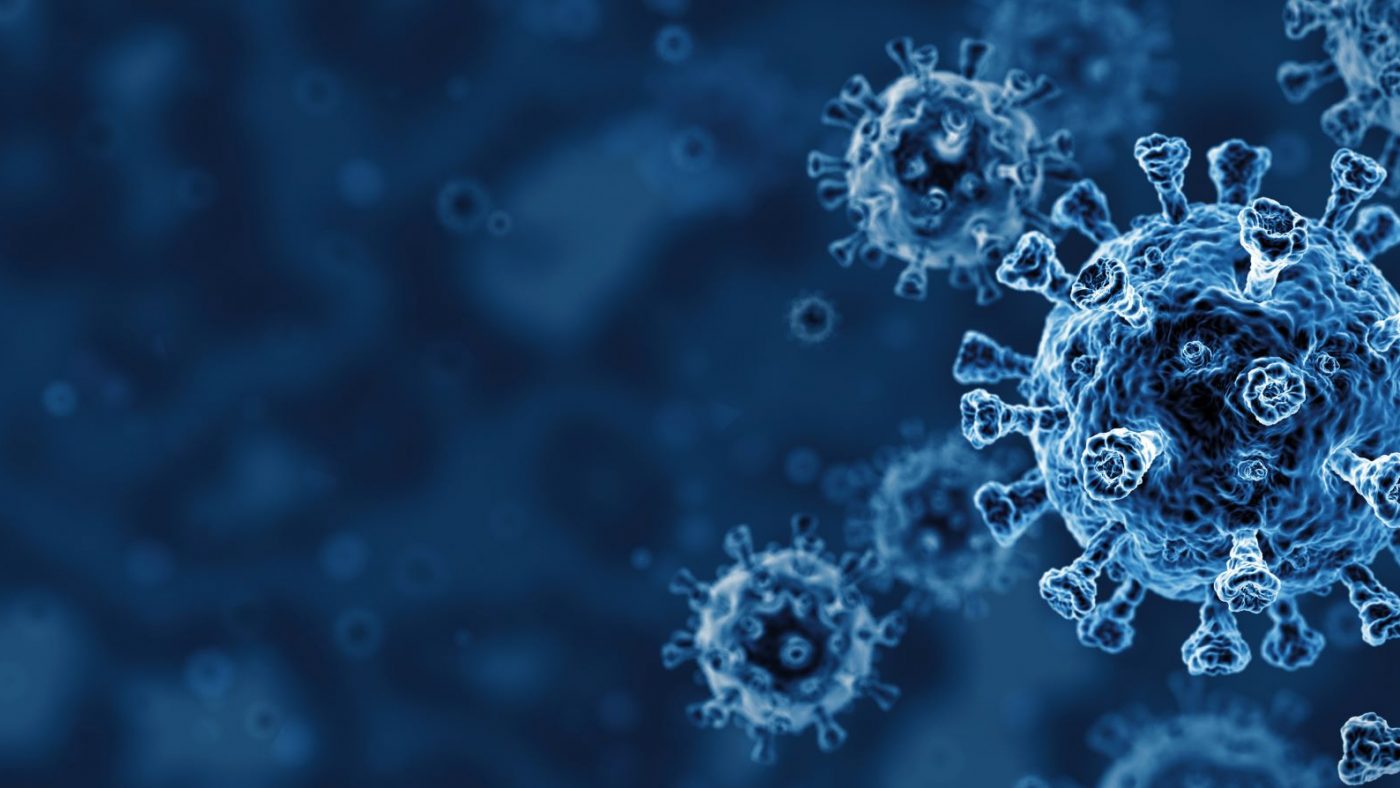By now most of us are aware of the respiratory disease caused by a novel (new) coronavirus that originated in China and has now spread to more than 60 countries, including the United States. The Vertex Companies, LLC (VERTEX) is releasing this bulletin to our clients as a means to provide a summary of information related to the coronavirus. If you would like to speak with an Environmental Expert, call 888.298.5162 or submit your information through the contact form below.
On January 30, 2020, the World Health Organization declared the outbreak a “public health emergency of international concern”. On January 31, 2020, Health and Human Services Secretary Alex M. Azar II declared a public health emergency (PHE) for the United States to aid the nation’s healthcare community in responding to the coronavirus.
What is Coronavirus Disease 2019 (COVID-19)?
The new virus has been named “SARS-CoV2” and the disease it causes has been named “coronavirus disease 2019”, abbreviated COVID-19. According to the World Health Organization (WHO), coronaviruses are not new and are a large family of viruses that are common in people and animals. Coronaviruses can cause a wide variety of illnesses ranging from the common cold to more severe diseases such as Middle East Respiratory Syndrome (MERS-CoV) and Severe Acute Respiratory Syndrome (SARS-CoV). A novel coronavirus is a new strain that has not been previously identified in humans. Coronaviruses are zoonotic, meaning they can be transmitted between animals and people.
Centers for Disease Control and Prevention (CDC)
In the United States, the Centers for Disease Control and Prevention (CDC) serves as the national focus agency for developing and applying disease prevention and control information and educating the public with regards to public health, including the coronavirus. The CDC website contains an abundance of information on the many aspects of the coronavirus disease that is updated frequently as information becomes available.
Symptoms of COVID-19
Common signs of COVID-19 infection include respiratory symptoms, fever, cough, shortness of breath and breathing difficulties. In more severe cases, an infection can cause pneumonia, severe acute respiratory syndrome, kidney failure, and, as we know from recent news, even death. Symptoms may appear within 2-14 days after exposure, although assessment from CDC is based on experience with previous coronavirus outbreaks. The most severe symptoms have been reported in elderly and immunocompromised individuals, although this is a rapidly evolving situation and according to the CDC, “the complete clinical picture with regard to COVID-19 is not fully understood.”
According to WHO, “Standard recommendations to prevent infection spread include regular hand washing, covering mouth and nose when coughing and sneezing, thoroughly cooking meat and eggs. Avoid close contact with anyone showing symptoms of respiratory illness such as coughing and sneezing”.

Coronavirus Disease 2019 (COVID-19) in the U.S.
Most of us are aware that there are confirmed cases of people in the U.S. infected with the new coronavirus. The following is from the CDC:
- Imported cases of COVID-19 in travelers have been detected in the U.S.
- Person-to-person spread of COVID-19 was first reported among close contacts of returned travelers from Wuhan.
- During the week of February 23rd, CDC reported community spread of the virus that causes COVID-19 in California (in two places), Oregon and Washington. Community spread in Washington resulted in the first death in the United States from COVID-19, as well as the first reported case of COVID-19 in a health care worker, and the first potential outbreak in a long-term care facility.

* Data include both confirmed and presumptive positive cases of COVID-19 reported to CDC or tested at CDC since January 21, 2020, with the exception of testing results for persons repatriated to the United States from Wuhan, China, and Japan. State and local public health departments are now testing and publicly reporting their cases. In the event of a discrepancy between CDC cases and cases reported by state and local public health officials, data reported by states should be considered the most up-to-date.
†Self-reported by health department characterizing the level of community transmission in their jurisdiction as: “Yes, widespread” (defined as widespread community transmission across several geographical areas); “Yes, defined area(s)” (defined as distinct clusters of cases in a, or a few, defined geographical area(s)); “Undetermined” (defined as: 1 or more cases but not classified as “Yes” to community transmission); or “N/A” (defined as no cases).

* Does not include cases among persons repatriated to the United States from Wuhan, China, and Japan.
† Numbers updated Saturday and Sunday are not confirmed by state and territorial health departments. These numbers may be updated when the official numbers are provided on Monday.

* Does not include cases among persons repatriated to the United States from Wuhan, China, and Japan, or U.S.-identified cases where the date of illness onset or specimen collection date has not yet been reported. Date is calculated as illness onset date if known. If not, an estimated illness onset date was calculated using specimen collection date.
Note: On March 24, CDC updated the data included in this figure to include estimated illness onset date.
You can visit the CDC COVID-19 information page, which is updated on Mondays, Wednesdays, and Fridays, to find out and track information from the CDC related to COVID-19 cases in the U.S.
For global information, visit the World Health Organization Coronavirus website for WHO’s daily situation reports related to global cases of COVID-19.
What to Do if You Have COVID-19
The CDC recommends the following if you are sick or suspect you may have the COVID-19 infection:
- Call your healthcare professional ahead of time if you develop a fever and symptoms of respiratory illness, such as coughing or difficulty breathing, and if you have been in close contact with a person known to have COVID-19 or if you live in or have recently traveled to an area known to have an outbreak
- Stay home unless you need medical care as stated above. People who have mild cases of COVID-19 are able to isolate at home during the illness. Avoid going to school, work, or public places and avoid using public transportation, ride-sharing, or taxis.
- Separate yourself from other people or animals in your home and use a separate bathroom, if possible.
- Call ahead before visiting your doctor and inform them that you may have COVID-19.
- Wear a facemask (e.g. surgical mask or N-95 mask) if you are around people or pets. If you are unable to wear a mask (e.g. due to difficulty in breathing), do not stay in the same room with other people unless they are wearing facemasks.
- Cover your coughs and sneezes with a tissue and discard the tissue in a lined garbage can. Immediately wash your hands and face with soap and water for a minimum of 20 seconds. If soap and water are not available, you can clean your hands with alcohol-based hand sanitizers that are comprised of at least 60% isopropyl alcohol.
- Clean your hands often with soap and water, especially after blowing your nose, coughing, or sneezing. Wash your hands for a minimum of 20 seconds. If soap and water are not available, you can clean your hands with alcohol-based hand sanitizers that are comprised of at least 60% isopropyl alcohol.
- Avoid sharing personal household items such as dishes, plates, drinking cups, towels, and bedding.
- Clean all “high-touch” items every day. These would include counters, tabletops, doorknobs, light switches, toilets, phones, and personal devices.
- Monitor your symptoms and seek prompt medical attention if your condition is worsening. BEFORE seeking care, call ahead and let your healthcare provider know that you have or are being evaluated for COVID-19. Wear a facemask to the doctor’s office or hospital.
CDC Risk Assessment for COVID-19
The following is CDC’s current risk assessment information as obtained from their website:
Outbreaks of novel virus infections among people are always of public health concern. The risk from these outbreaks depends on the characteristics of the virus, including how well it spreads between people, the severity of resulting illness, and the medical or other measures available to control the impact of the virus (for example, vaccine or treatment medications). The fact that this disease has caused illness, including illness resulting in death, and sustained person-to-person spread is concerning. These factors meet two of the criteria of a pandemic. As community spread is detected in more and more countries, the world moves closer toward meeting the third criteria – worldwide spread of the new virus.
While there is still much to learn about the unfolding situations in California, Oregon, and Washington, preliminary information raises the level of concern about the immediate threat for COVID-19 for certain communities in the United States. The potential public health threat posed by COVID-19 is very high, to the United States and globally.
At this time, however, most people in the United States will have little immediate risk of exposure to this virus. This virus is NOT currently spreading widely in the United States. However, it is important to note that current global circumstances suggest it is likely that this virus will cause a pandemic. This is a rapidly evolving situation and the risk assessment will be updated as needed.
Current risk assessment:
- For the general American public, who are unlikely to be exposed to this virus at this time, the immediate health risk from COVID-19 is considered low.
- People in communities where ongoing community spread with the virus that causes COVID-19 has been reported are at elevated though still relatively low risk of exposure.
- Healthcare workers caring for patients with COVID-19 are at elevated risk of exposure.
- Close contacts of persons with COVID-19 also are at elevated risk of exposure.
- Travelers returning from affected international locations where community spread is occurring also are at elevated risk of exposure.
You can learn more on the CDC Coronavirus Disease 2019 (COVID-19) webpage.
CDC Guidance for Potential Exposures to COVID-19
The CDC has developed guidance to help in the risk assessment and management of people with potential exposures to COVID-19.
Interim U.S. Guidance for Risk Assessment and Public Health Management of:
- Healthcare Personnel with Potential Exposure in a Healthcare Setting to Patients with 2019 Novel Coronavirus (2019-nCoV)
- Persons with Potential Coronavirus Disease 2019 (COVID-19) Exposure in Travel-associated or Community Settings
Interim Guidance for Public Health Personnel:
- Evaluating Persons Under Investigation (PUIs) and Asymptomatic Close Contacts of Confirmed Cases at Their Home or Non-Home Residential Settings
- Assessing & Managing Risk Based on Different Exposures to COVID-19
How Can VERTEX Help?
VERTEX will be actively monitoring the CDC and WHO websites for new and developing information related to COVID-19 and will share this information with our clients on our website.
To learn more about VERTEX’s Industrial Hygiene & Building Sciences Services or to speak with an Environmental Expert, call 888.298.5162 or submit your contact information below.
[hubspot portal=”4392174″ id=”fa6213ae-c133-4358-8aff-543fde2df8bb” type=”form”]



